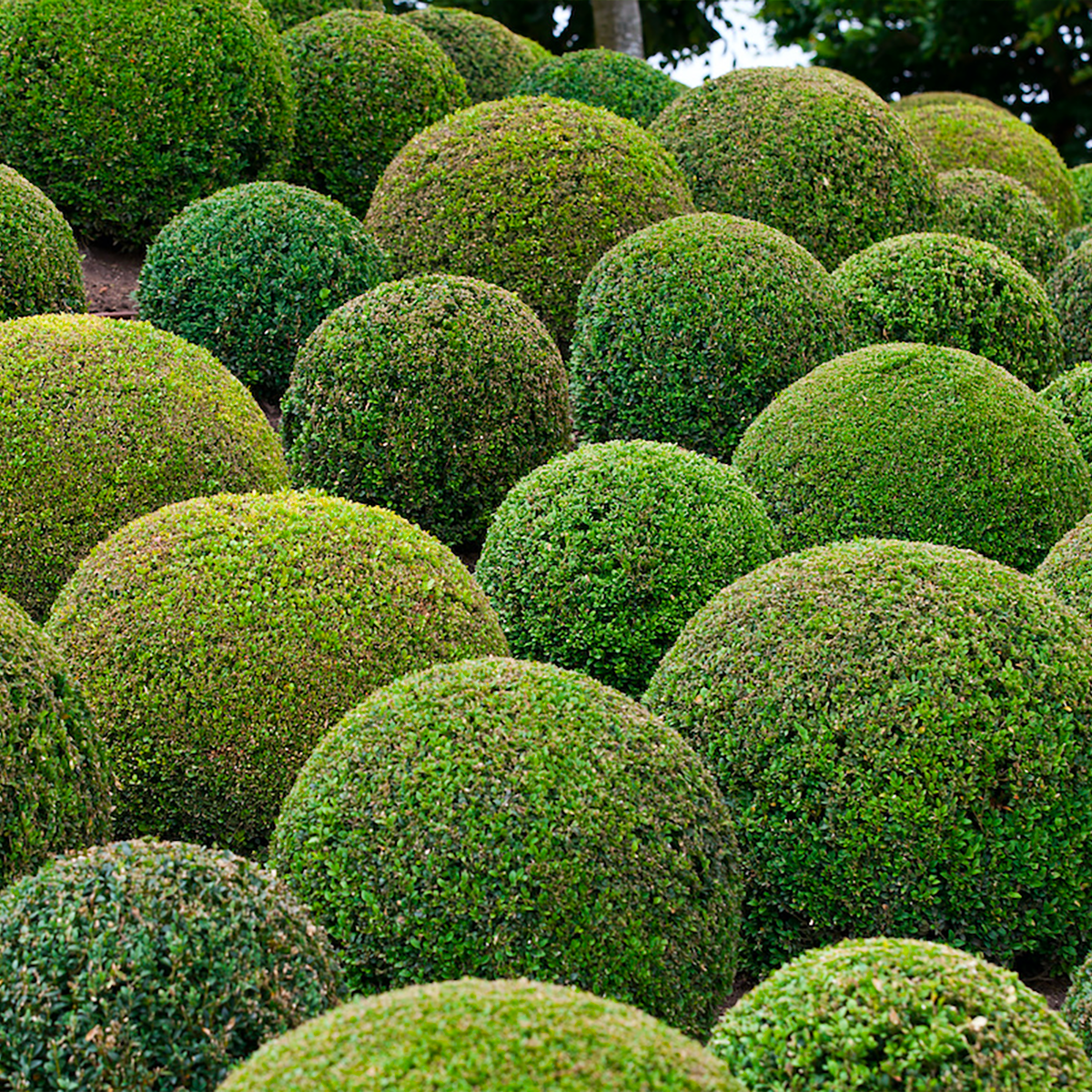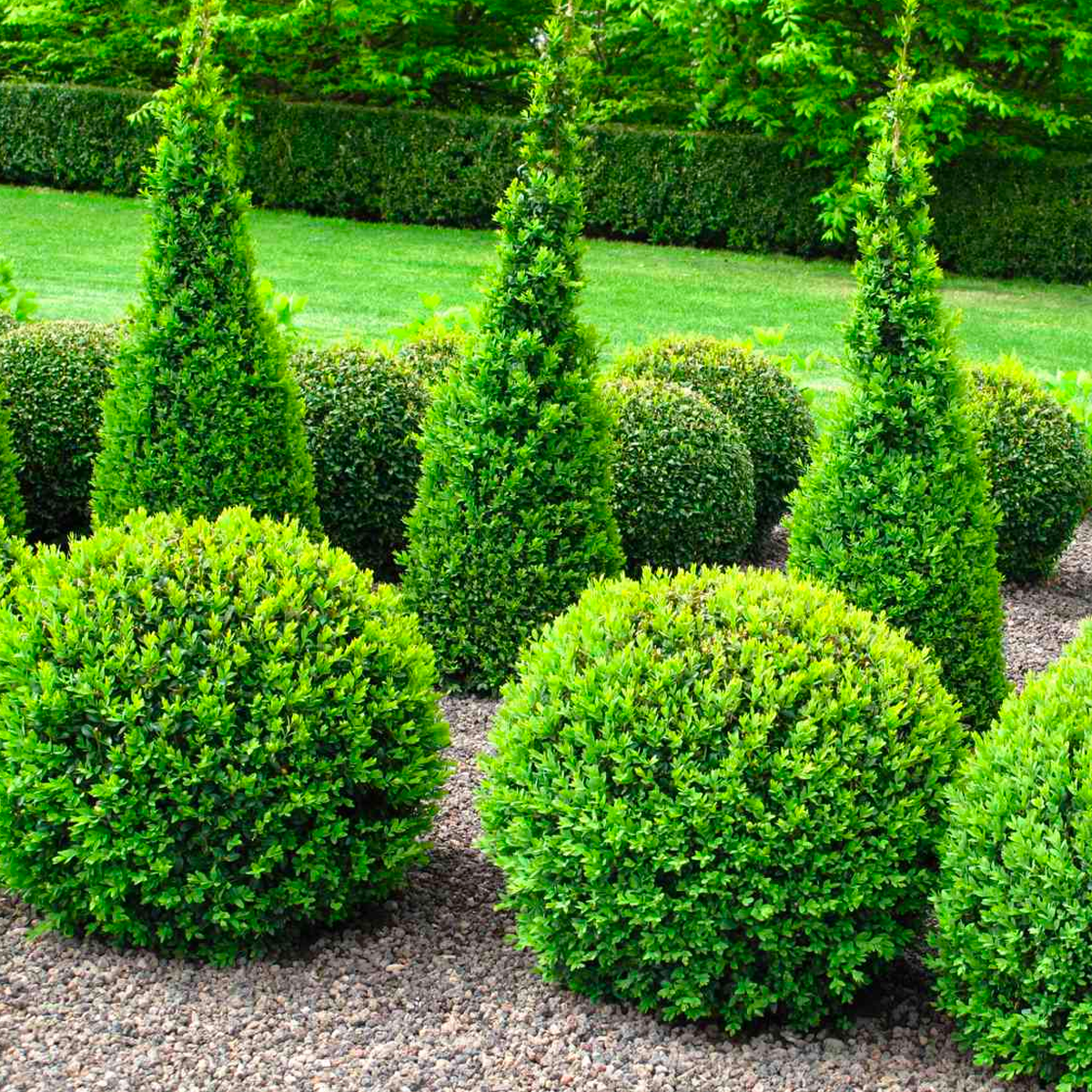The Buxus genus includes about 70 species of slow-growing broadleaf evergreens with small, rounded, and leathery leaves.
Most of the garden forms are cultivars or hybrids of two species— B. sempervirens (common box) and B. microphylla (Japanese box). Boxwoods are typically large shrubs or small trees, but most of the varieties used in modern landscaping are dwarf varieties, such as B. sempervirens ‘Suffruticosa‘, a popular plant for hedges and topiaries. Another dwarf variety is the Korean (Buxus sinica var. insularis). It reaches a mature height of just 2 feet tall (with a slightly greater spread). These dwarf boxwood shrubs are prized for their densely packed, light-green leaves and a rounded, compact growth habit.
Boxwood Shrub Care: Boxwoods are best planted in loamy soil in a full-sun to part-shade location, preferably in an area somewhat sheltered from winds. Their roots are shallow, so the soil must be protected from the heat. Maintain a layer of organic garden mulch, 3 inches thick, around each plant. Start mulching 2 inches out from the trunk—as a general rule, it is bad to mulch right up against the trunk of a bush or tree, because it invites pests and diseases—and work your way about one foot outwards, around the whole circumference, space permitting.
When grown as a hedge or formal screen, the primary maintenance for the shrubs will be in regular pruning, though this will not be necessary if you are using them as specimen plantings.
Pruning: Although they are known for their tolerance for hard pruning, most boxwoods will form a nice informal shape without much pruning at all. Only occasional pruning is required to clean out dead branches or those that are twisted together.
When pruning hard for shape, the trimming can be done almost any time during the growing season, though it should be avoided in late fall to avoid winter bronzing.




